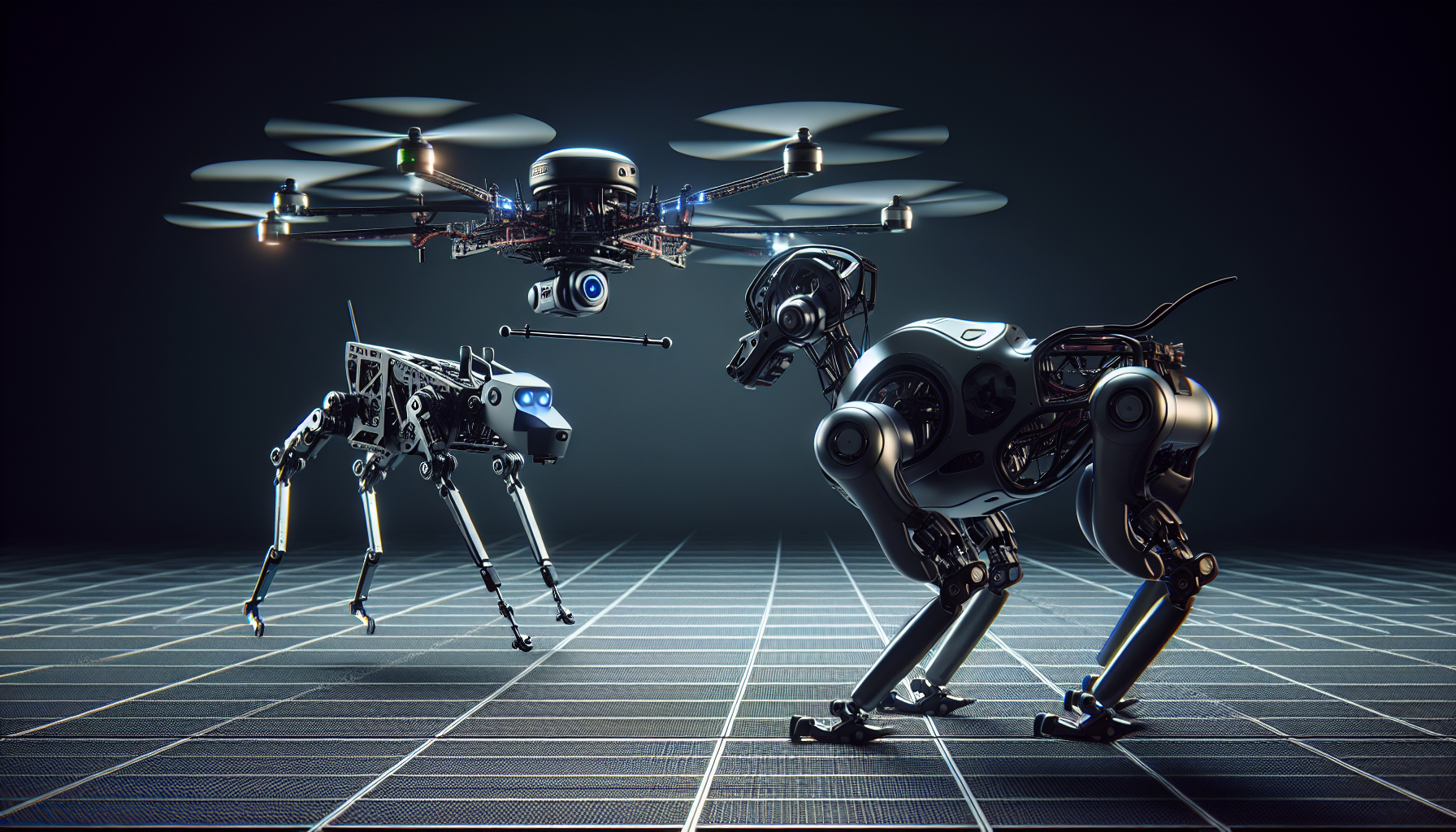The Ascendance of Autonomous Warfare: Robot Dog vs. Drone in a Pyrotechnic Showdown
A Glimpse Into the Future of Robotic Warfare
A trending video from China has caught the world’s eye, displaying an exhilarating duel between a robot dog and a drone, both outfitted with firework launchers. While the performance might have been staged for amusement, it poses significant inquiries about the swift progress in autonomous warfare technology.
The confrontation showcased a Unitree robot dog engaged in a tactical maneuver with a flying drone, both apparently displaying enhanced tracking and evasion abilities. It remains uncertain whether these machines were operating autonomously or via remote control, but their actions imply an increasing sophistication in AI-integrated combat systems.
AI in Autonomous Weaponry: A New Era of Warfare
Artificial intelligence has transformed modern warfare, allowing autonomous weapon systems to identify and engage targets without human involvement. Present surface-to-air missile defense systems now work autonomously, detecting and intercepting threats more quickly than human operators can respond. Moreover, AI-enhanced drones have exhibited facial recognition abilities, stirring concerns about the potential deployment of autonomous assassination devices.
The robot dog featured in the video seems to exemplify AI-assisted movement, tracking, and evasion—abilities that might soon become commonplace in robotic combat units. If AI-powered machines can autonomously determine the timing and manner of engaging in combat, military strategies globally could undergo a profound transformation.
The Global Arms Race: Nations Investing in AI-Powered Combat
The U.S. military and other global forces are significantly investing in artificial intelligence for battlefield applications. Research continues into AI-enhanced surveillance, drone swarms, and unmanned combat vehicles. China, in particular, has shown a keen interest in advancing robotic warfare technologies.
This trend extends beyond military uses alone. Private enterprises and defense contractors are also investigating the capabilities of AI-driven security and combat systems, indicating a shift toward a future where machine intelligence assumes a crucial role in national defense strategies.
Ethical and Strategic Concerns of Autonomous Combat
As autonomous weapon systems advance, ethical and strategic dilemmas intensify. Delegating life-and-death choices to AI prompts serious considerations regarding accountability, regulations, and unintended civilian casualties. Who bears responsibility when an autonomous machine makes an erroneous judgment?
The global community is already discussing the necessity for regulations governing AI in warfare. Some experts advocate for an outright ban on autonomous weapons, while others propose implementing stringent guidelines to guarantee human oversight in every combat scenario.
The Future: Should Robots Decide When to Engage?
The viral clash between the robot dog and the drone may have been orchestrated, but it emphasizes a reality: AI-enabled combat is nearer than one might think. As robotic warfare technology continues to advance, society must confront the ethical and legal hurdles that accompany such progress.
Should machines be permitted to make life-or-death determinations without human oversight? As AI-enabled warfare evolves, governments, military officials, and ethicists must collaborate to create clear protocols before autonomous combat becomes an irreversible fact.
Conclusion
The emergence of AI-driven combat systems presents both a chance and a challenge. While autonomous technology can enhance military efficiency, it introduces ethical quandaries and strategic hazards. The recent viral footage of a robot dog contesting with a drone may resemble a scene from science fiction, yet it serves as a clarion call for policymakers and military leaders around the globe. The future of warfare is rapidly unfolding, and the choices made today will shape the integration of AI in global security for years to come.
Frequently Asked Questions
1. Was the robot dog in the video fully autonomous?
It is uncertain whether the robot dog in the video operated fully autonomously or was remotely directed. Nevertheless, its capacity to track and evade the drone implies that at least some AI-driven movement and targeting functions were involved.
2. What kind of AI is used in autonomous weapons?
Autonomous weapons employ a blend of machine learning, computer vision, and real-time data processing to identify and engage threats. Certain systems also utilize facial recognition and predictive analytics to boost targeting effectiveness.
3. Are there regulations against autonomous combat robots?
At present, there are no global regulations prohibiting autonomous combat robots, but discussions are progressing in the United Nations and other international platforms about formulating guidelines and restrictions for AI-enabled warfare.
4. How is the U.S. military using AI in warfare?
The U.S. military is actively developing AI-enhanced battlefield strategies, including autonomous drones, robotic surveillance systems, and AI-assisted decision-making tools for combat operations.
5. What are the ethical concerns of AI-powered combat?
The main ethical issues include accountability for unintended casualties, the danger of autonomous systems making life-or-death choices without human supervision, and the potential for AI-driven warfare to escalate conflicts more swiftly.
6. Could autonomous robots replace human soldiers?
While AI-enhanced combat robots are advancing, they are unlikely to entirely replace human soldiers in the near future. However, they may occupy a significant role in support and reconnaissance missions.
7. How soon could we see fully autonomous combat robots in real warfare?
Given the current speed of AI developments, fully autonomous combat robots could be deployed within the next decade, contingent on technological innovations and regulatory decisions.